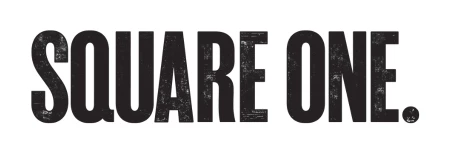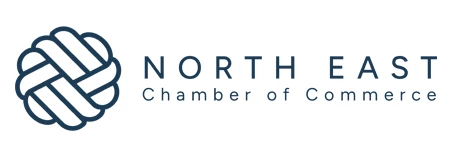Partner Article
What Should Employers Know About Gender Pay Gap Reporting?
Business owners have had a lot to contend with in recent months, from auto enrolment to growing concern about workplace diverse and equality and perhaps, most concerning – the gender pay gap reporting.
A number of high profile cases when it came to pay between the sexes along with some shocking statistics (the gender pay gap only closed by 4% from 56% in 2006 to 60% in 2015) has meant that the proverbial clock is ticking. Now is the time for transparency when it comes to businesses reporting on any discrepancies between the pay of their male and female employees. Since the preliminary consultation of the introduction of the pay gap reporting last July, there have been a number of proposed parts of the legislation.
Although this information is only required to be published online by those companies with over 250 employees, it would be wrong to assume that employees within smaller businesses won’t have their attention drawn to the issue and leaders within these businesses may find themselves coming under some scrutiny as the media continue to report on the issue.
Whether you believe that you may be indirectly affected or not, find below some of the facts that employers and SME businesses owners should know.
Dates For Your Diary
Despite the proposed commencement date being in October of this year, employers actually have until April 2018 before their findings are published.
However, don’t fall into the trap of thinking this is a long way off – the first report to be published will be covering findings dating back over the previous 12 months to April 2017. This effectively gives those companies 12 months to address and reduce any gaps in their figures and an opportunity to prevent any negative press that will undoubtedly arise when reports are published.
2019 looks set to be the year that employers come under scrutiny when it comes to progress that has been made since the findings were published.
Those Affected
In the initial stages the responsibility and pressure will lay with the employers. Ultimately this means that the directors, HR personnel and senior leaders that will be required to ensure the information is collated and reported within the timeframe, as well as answer any questions and concerns that may arise amongst employees.
By shining the spotlight directly onto the issue, the eventual goal is to ensure it’s the (female) employees that benefit by coercing employers to close the gap.
Kathryn Nawrockyi, gender equality director at Business in the Community, has said that “compulsory reporting would lead to a reduction in bias and introduce greater transparency in decision-making, not only in pay, but in recruitment, performance appraisals and promotion decisions.”
There are of course those who are concerned that, rather than it will have negative impact that is much rather spread, putting pressure on the UK economy as a whole. The concerns centre around the progression in current salaries; whether the gender pay gap reporting is to blame for the widespread rumours of pay freezes this year rather than the issues plaguing the CPI and RPI as well as apprehensions surrounding the overall impact the reporting will have, i.e., seeing a rise in the salaries of female employees, a drop in salaries paid to men will become stagnant to close the gap.
Of course, there will be a wide range of people interested in seeing the published figures and league tables.
The Comparison
There are 2 data sets that are to be separately analysed and published from around 8000 UK firms; these are pay and bonuses.
The definition of ‘pay’ will be consistent with that used by the Office of National Statistics and their ASHE report. It includes basic pay, paid leave, maternity and sick pay, premium shift pay, area allowances and bonus pay. And while it doesn’t include areas such as overtime, expenses and benefits in kind, it does also include car allowances paid through payroll, clothing, on call allowances and allowances for first aiders or fire marshals.
The gross hourly rate of pay will be calculated by dividing the weekly basic pay by the weekly basic paid hours.
‘Bonuses’ are defined as profit sharing, productivity and performance related pay and commission. Bonuses also includes the cash equivalent value of shares on the date of payment.
The Published Information
The way in which the information is to be published has come under much fire. As not only will the data be published in English and available to the public and employees – it will be ranked in a league table by the government.
Carolyn Fairbairn, CBI director general, said the ranking “should not be used to name and shame firms, as data will only be able to present a partial picture, particularly given factors such as the mix of part-time and full working and sectoral differences.”
Under the new legislation, employers are required to publish a number of pieces of information within each pay period;
- The number of male and female employees
- The difference in the mean and median pay between male and female employees
- The difference in the mean bonus payments between male and female employees
- The proportion of male and female employees that received bonus pay
“There has been much discussion in the media about the government publishing “league tables” to name and shame offending specific employers. In reality the government has currently only proposed to publish league tables of industry sectors. However, given that employers are required to submit their information directly to the government, it would be unsurprising if, insufficient progress is not made towards closing the pay gap; offending employers are eventually named.” Explains Tim Kellet, Director at Paydata, “This latest legislation is another step from the government in forcing employers to address pay equality within their organisations. Indeed as a result, since July we have found pay equality moving higher up employers’ agendas, with more wanting to be pro-active on the issue.”
This was posted in Bdaily's Members' News section by Rebecca Moore .
Enjoy the read? Get Bdaily delivered.
Sign up to receive our popular morning National email for free.








 Have stock markets peaked? Tune out the noise
Have stock markets peaked? Tune out the noise
 Will the Employment Rights Bill cost too much?
Will the Employment Rights Bill cost too much?
 A game-changing move for digital-first innovators
A game-changing move for digital-first innovators
 Confidence the missing ingredient for growth
Confidence the missing ingredient for growth
 Global event supercharges North East screen sector
Global event supercharges North East screen sector
 Is construction critical to Government growth plan?
Is construction critical to Government growth plan?
 Manufacturing needs context, not more software
Manufacturing needs context, not more software
 Harnessing AI and delivering social value
Harnessing AI and delivering social value
 Unlocking the North East’s collective potential
Unlocking the North East’s collective potential
 How specialist support can help your scale-up journey
How specialist support can help your scale-up journey
 The changing shape of the rental landscape
The changing shape of the rental landscape
 Developing local talent for a thriving Teesside
Developing local talent for a thriving Teesside